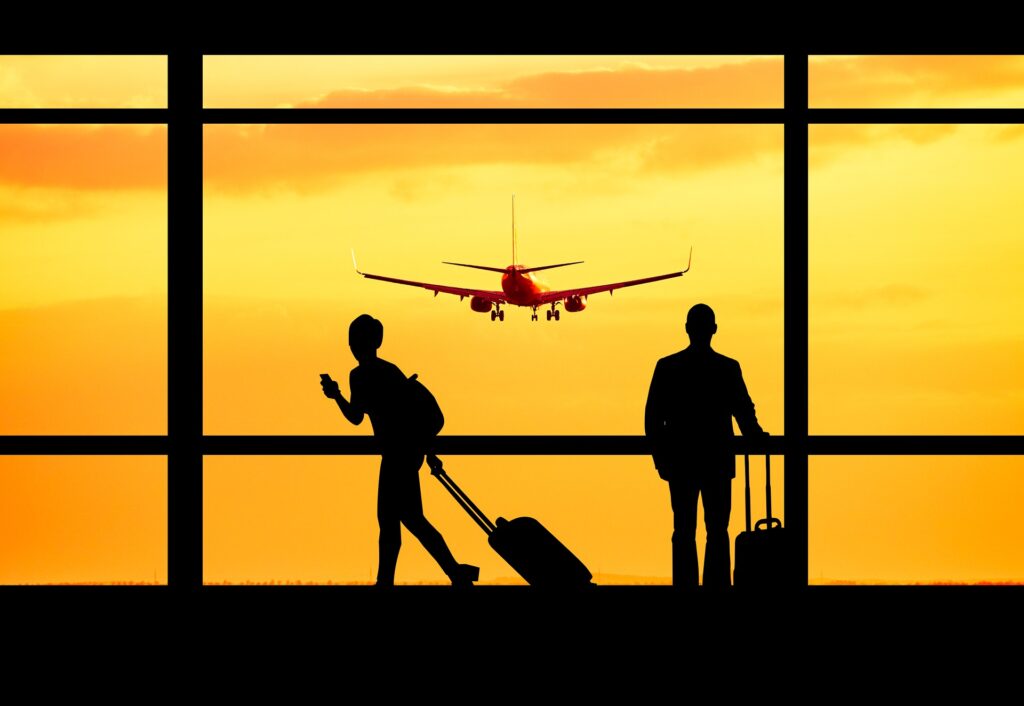Embark on a journey where caution and adventure go hand in hand, as we navigate the uncharted waters of pandemic-era travel – discover the essential tips and tricks for voyaging with vigilance and ensuring your safety every step of the way.
During the COVID-19 pandemic a significant impact was seen on the travel and tourism industry worldwide.
With the emergence of new virus strains and the continued spread of the disease, travelers must take extra precautions to ensure their safety and prevent the spread of the virus. Safe travel practices during a pandemic are more important than ever before. Not only do these practices protect you and your fellow travelers, but they also help prevent the further spread of the virus. In this essential guide, we’ll provide you with an overview of tips and strategies for traveling safely during a pandemic. We’ll cover a range of topics, including how to prepare for your trip, what to do during your journey, and how to minimize your risk of exposure to the virus. With the right information and preparation, you can voyage with vigilance and enjoy your travels while staying safe and healthy.
Preparing for Your Trip
To ensure a safe and successful trip during a pandemic, it’s crucial to prepare in advance. Firstly, it’s important to stay informed about any travel advisories and restrictions in your destination. Check government websites and travel advisories regularly, as these can change rapidly. Secondly, assess your own personal health risks and the necessity of your travel. If you are at a higher risk of developing severe COVID-19 symptoms, it may be best to postpone your trip. If travel is necessary, consult with a healthcare provider before departing. Thirdly, choose safer travel destinations and accommodations. Consider traveling to places with lower COVID-19 infection rates or that have strict health and safety protocols in place. Additionally, select hotels or rental properties that follow strict hygiene and disinfection measures. Finally, consider purchasing appropriate travel insurance that covers COVID-19-related medical expenses and trip cancellation or interruption due to the pandemic. By following these tips, you can prepare for a safer and more secure trip during these uncertain times.
Safe Travel Practices
Once you have prepared for your trip, it’s essential to practice safe travel practices to minimize your risk of exposure to the virus. Firstly, it’s important to adhere to health and safety guidelines from health authorities in your destination. These may include wearing masks, maintaining physical distance, and avoiding large gatherings. Secondly, practice good hygiene by washing your hands frequently with soap and water or using hand sanitizer when soap and water are not available. Additionally, avoid touching your face and cough or sneeze into your elbow or a tissue. Thirdly, wearing masks and using personal protective equipment (PPE) can provide additional protection against the virus. Make sure to bring enough masks and PPE for your entire trip. Lastly, minimize contact with high-touch surfaces and crowded areas as much as possible. Consider using contactless payment methods, carry your own sanitizing wipes, and avoid using shared objects such as pens or touchscreens. By practicing these safe travel practices, you can help protect yourself and others during your travels.
Transportation Considerations
Transportation during a pandemic requires extra consideration to ensure your safety. Firstly, when selecting your mode of transportation, consider the safest options available. Driving your own car or renting a car may be the best option as it minimizes your contact with others. If you must use public transportation, select a method that follows strict health and safety protocols such as regular cleaning and disinfection. Secondly, navigating airports, train stations, and other transit hubs safely requires taking extra precautions. Wear masks, maintain physical distance, and avoid touching high-touch surfaces. Consider using contactless check-in and boarding methods and bringing your own food and beverages to reduce your contact with others. Lastly, if you plan to take a road trip or rent a car, make sure to clean and disinfect the vehicle before and after use. Also, plan your route in advance to minimize your need for stops and reduce your contact with others. By following these transportation considerations, you can help reduce your exposure to the virus while traveling.
Dining and Sightseeing Safely
While traveling, it’s important to practice safe dining and sightseeing practices. Firstly, opt for outdoor dining or takeout options rather than indoor dining. Outdoor spaces provide better ventilation and reduce your contact with others. Secondly, visit less crowded attractions and outdoor spaces to minimize your exposure to the virus. Consider visiting parks, beaches, or hiking trails instead of crowded tourist attractions. Lastly, respect local guidelines and restrictions in your destination. Many places have strict health and safety protocols in place, such as reduced capacity or mandatory mask-wearing.
Returning Home and Post-Travel Precautions
Once your trip is over, it’s important to take precautions when returning home to minimize the spread of the virus. Firstly, monitor your health for any symptoms and follow any quarantine requirements in your destination or upon returning home. Secondly, get tested for COVID-19 if necessary, and self-isolate while waiting for your results. Lastly, share your travel experiences with others to help them stay safe during their travels. By following these precautions, you can help prevent the spread of the virus and keep yourself and others healthy.
In conclusion, safe travel during a pandemic requires extra preparation and precautions. By staying informed, practicing good hygiene, selecting safe transportation, and respecting local guidelines, you can reduce your risk of exposure to the virus and enjoy a safe and memorable trip.

